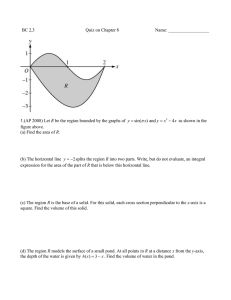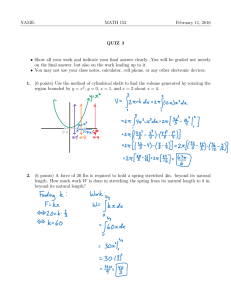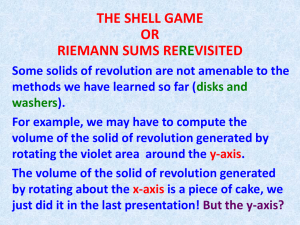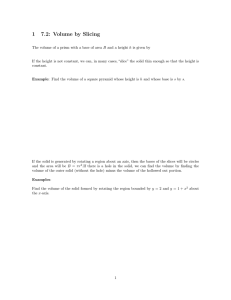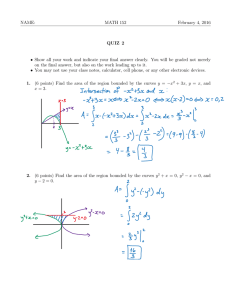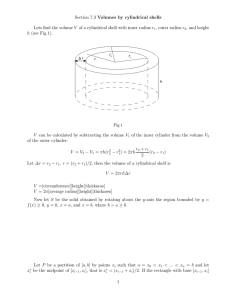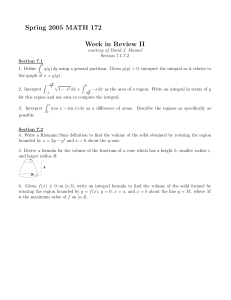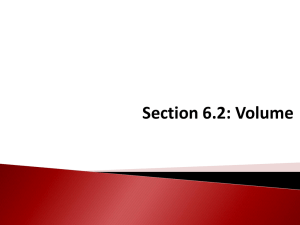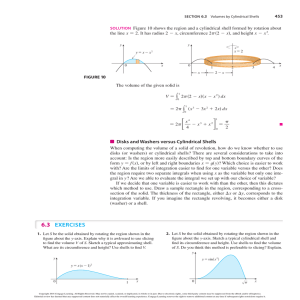Section 7.3– Volumes by Cylindrical Shells
advertisement
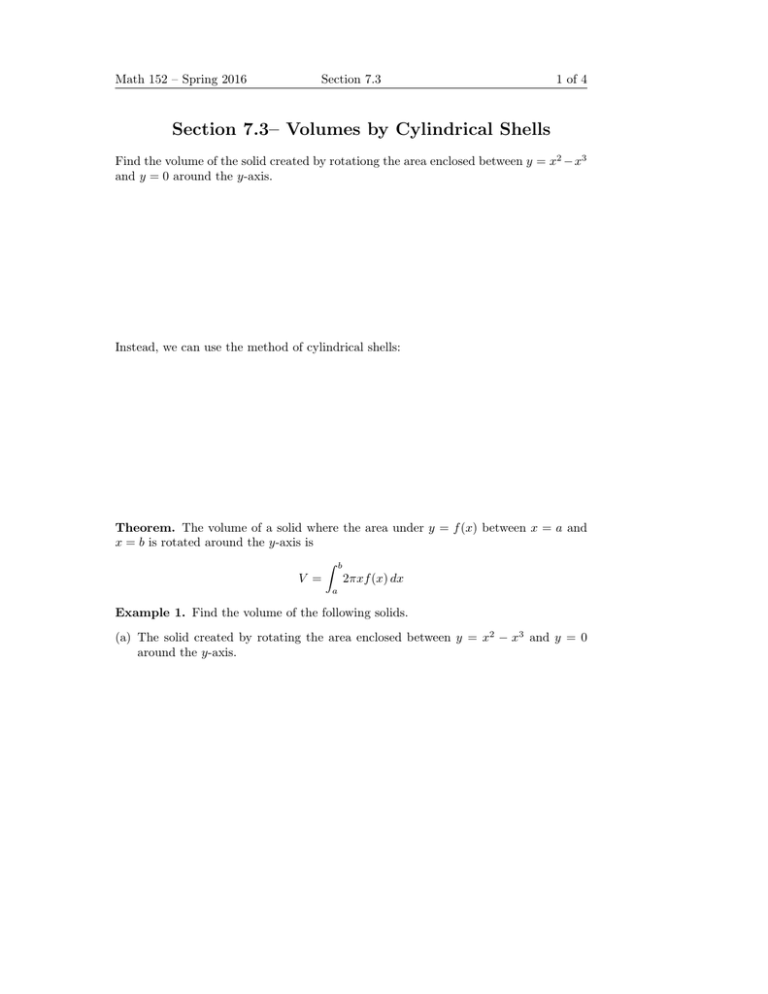
Math 152 – Spring 2016 Section 7.3 1 of 4 Section 7.3– Volumes by Cylindrical Shells Find the volume of the solid created by rotationg the area enclosed between y = x2 − x3 and y = 0 around the y-axis. Instead, we can use the method of cylindrical shells: Theorem. The volume of a solid where the area under y = f (x) between x = a and x = b is rotated around the y-axis is Z V = b 2πxf (x) dx a Example 1. Find the volume of the following solids. (a) The solid created by rotating the area enclosed between y = x2 − x3 and y = 0 around the y-axis. Math 152 – Spring 2016 Section 7.3 2 of 4 (b) The solid created by rotating the region bounded by x = y 2 , x = 0, y = 2, and y = 5 around the x-axis. (c) The solid created by rotation the region bounded by y 2 = x and x = 2y around the y-axis. Question. What if the area is not rotated around an axis? Solution: The volume of a solid using cylindrical shells is Z b circumf erence ∗ height dx V = a where formulas are inserted for circumference (2πr) and height of each shell, and a and b are the x-values where the shells start and stop. Math 152 – Spring 2016 Section 7.3 3 of 4 Example 2. Use cylindrical shells to find the volume generated by rotating the region bounded by the curves around the specified line. (a) y = x3 , y = 0, x = 1, x = 2; about the line x = 3 (b) x = 4 − y 2 , x = 2 − y; about the line y = 2 Math 152 – Spring 2016 Section 7.3 4 of 4 Question. Should I use shells or disks/washers? Remark. Be careful with your axis of rotation and your variable for integration: Axis of rotation Disks/Washers Shells x-axis or y = a x integral y integral y-axis or x = a y integral x integral Example 3. Graph both a typical disk/washer and typical shell for the following solids and then setup the integrals. Which method is easier? (a) Rotate the area bounded by the curves y = x2 , x = 1, x = 2, and y = 0 around the y-axis. (b) Rotate the area bounded by the curves y = ex , x = 1, and y = 0 around the x-axis. (c) Rotate the area bounded by y = x2 and y = 2x around the y-axis.
